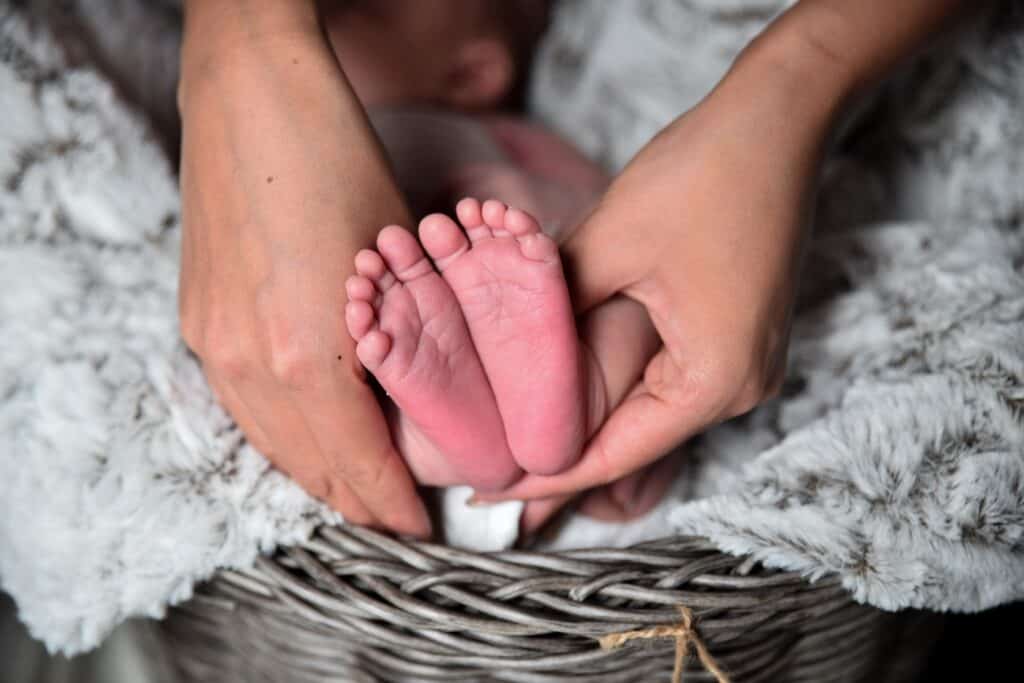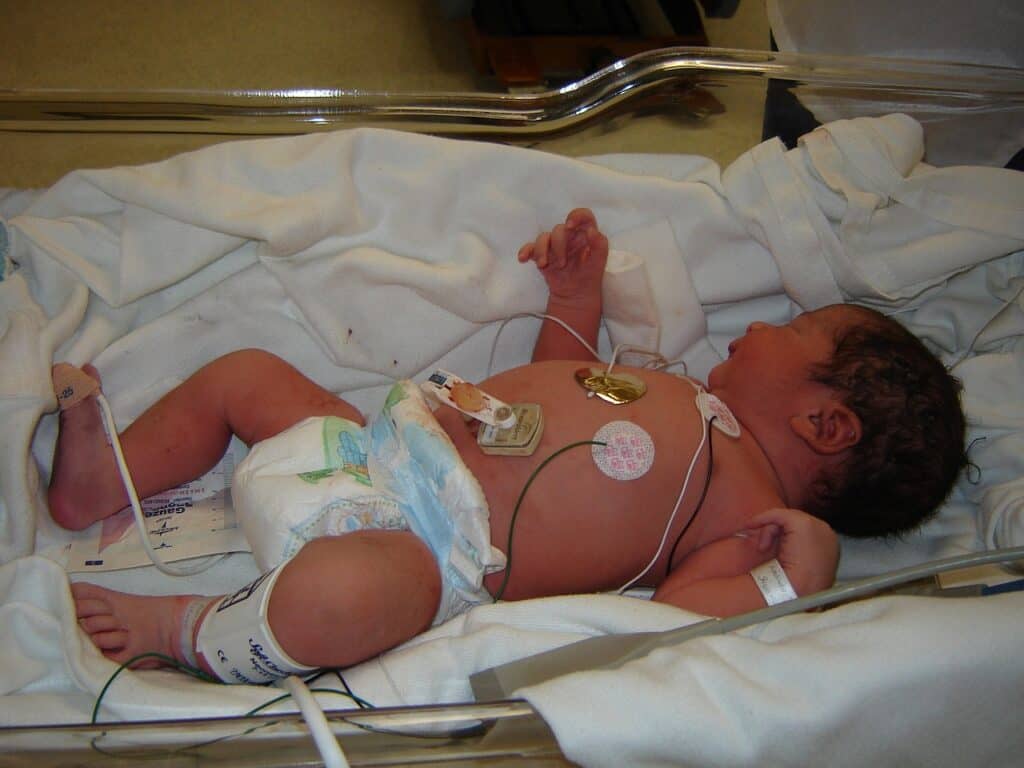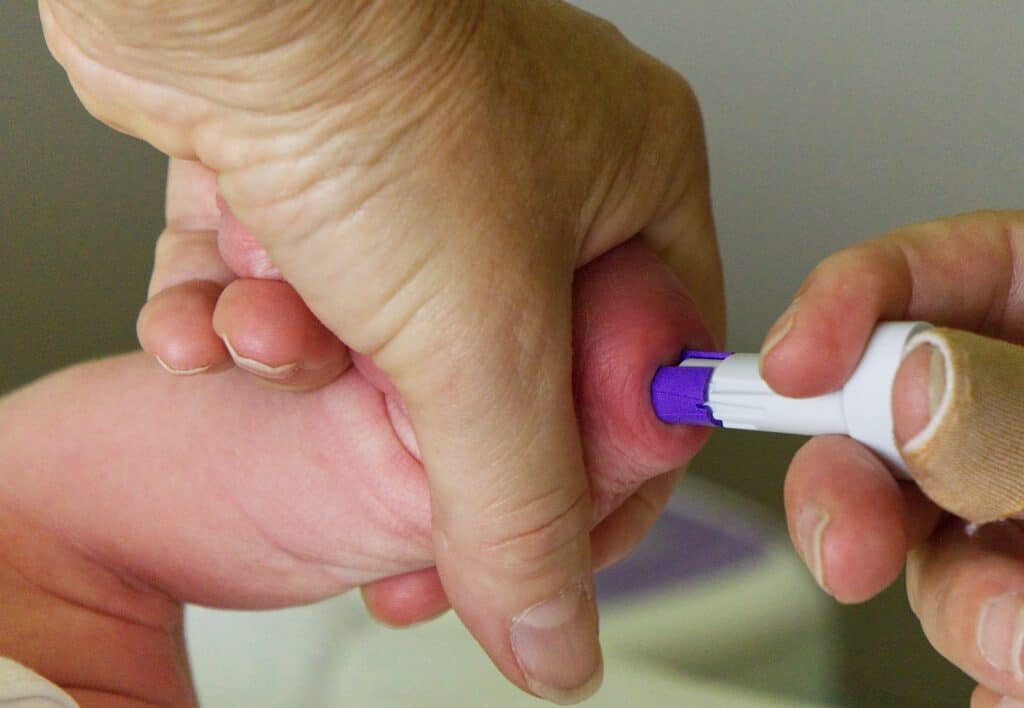Leg tremors in babies can be a cause of concern for parents, especially when it comes to a four-month-old baby. While it is normal for babies to have some degree of leg tremors, excessive shaking or twitching can be a sign of an underlying condition. In this article, we will explore the common causes of leg tremors in four-month-old babies, the symptoms and signs to look out for, the diagnosis process, and the available treatment options.
Understanding baby leg tremors is important for parents to be able to identify when something is wrong. Leg tremors can be caused by a variety of factors, including neurological disorders, muscle weakness, or even a side effect of medication. While some tremors are harmless and may go away on their own, others may require medical attention. It is important for parents to know the difference and seek medical advice if they are unsure.
Common Causes of Leg Tremors in Four-Month-Old Babies
- Symptoms and Signs of Leg Tremors in Babies
- Diagnosis Process and Available Treatment Options
Key Takeaways
- Leg tremors in babies can be caused by a variety of factors and may require medical attention.
- Parents should be aware of the symptoms and signs of leg tremors in babies to identify when something is wrong.
- The diagnosis process and treatment options for leg tremors in babies vary depending on the underlying cause.
Understanding Baby Leg Tremors
Baby leg tremors can be concerning for parents, especially when they occur in a four-month-old baby. Tremors are involuntary movements that can affect any part of the body, including the legs. While it’s normal for babies to have some jerky movements, persistent tremors may indicate an underlying condition.
There are different types of tremors, and each has its own characteristics. Some tremors are rhythmic, while others are irregular. Some tremors occur when the baby is resting, while others occur during movement. Tremors can also vary in intensity and duration.
In some cases, baby leg tremors may be a result of normal development. As babies grow and develop, they learn to control their movements. This process can sometimes result in tremors, which usually resolve on their own.
However, in some cases, tremors may be a sign of a neurological disorder or other underlying condition. For example, tremors can be a symptom of cerebral palsy, a group of disorders that affect movement and posture. Tremors can also be a symptom of seizures or other neurological conditions.
If a parent notices persistent tremors in their baby’s legs, they should consult a pediatrician. The pediatrician can perform a physical exam and may order additional tests to determine the cause of the tremors.
In summary, baby leg tremors can be a normal part of development, but they can also indicate an underlying condition. Parents should be aware of the different types of tremors and should consult a pediatrician if they are concerned about their baby’s movements.
Common Causes of Leg Tremors
Leg tremors can be caused by a variety of factors, including both neurological and non-neurological conditions. Here are some of the most common causes:
Nervous System Disorders
Tremors can be caused by damage to the nervous system, which can occur due to a variety of factors such as injury, disease, or aging. Some common nervous system disorders that can cause leg tremors include:
- Parkinson’s disease
- Multiple sclerosis
- Huntington’s disease
- Essential tremor
Brain Disorders
Brain disorders can also cause leg tremors. These disorders can be caused by a variety of factors, including genetics, injury, or disease. Some common brain disorders that can cause leg tremors include:
- Cerebral palsy
- Traumatic brain injury
- Stroke
Metabolic Disorders
Metabolic disorders occur when the body is unable to properly process certain substances, such as glucose. This can lead to a variety of symptoms, including leg tremors. Some common metabolic disorders that can cause leg tremors include:
- Hypoglycemia (low blood sugar)
- Hyperthyroidism (overactive thyroid)
- Hypocalcemia (low calcium levels)
It is important to note that leg tremors can also be caused by medications, caffeine, or stress. If you or your child is experiencing leg tremors, it is important to speak with a healthcare provider to determine the underlying cause and appropriate treatment.
Symptoms and Signs
Parents of a four-month-old baby may notice leg tremors, which can be a cause of concern. Tremors are involuntary movements that can occur in any part of the body. In infants, tremors are often seen in the arms, legs, and head. Tremors can be a sign of an underlying medical condition, or they may be a normal part of development.
In addition to leg tremors, parents may observe other symptoms and signs in their four-month-old baby. These may include grimacing, eyes rolling up, loss of developmental milestones, fussiness, and silence. Grimacing is the act of making an unpleasant facial expression. Eyes rolling up is when the baby’s eyes move upwards, exposing the whites of the eyes. Loss of developmental milestones is when the baby stops achieving new developmental milestones, such as rolling over or sitting up. Fussiness is when the baby is irritable and difficult to soothe. Silence is when the baby is not making any sounds or vocalizations.
It is important for parents to pay attention to these symptoms and signs and to discuss them with their pediatrician. The pediatrician can help determine if the symptoms and signs are a cause for concern and can recommend any necessary tests or treatments.
Related Conditions
There are several conditions that may cause tremors in a 4-month-old baby. These conditions include seizures, stroke, epilepsy, infantile spasms, West syndrome, and benign neonatal sleep myoclonus.
Seizures are a common cause of tremors in infants. They occur when there is abnormal electrical activity in the brain. Seizures can be caused by a variety of factors, including fever, infection, and brain injury.
Stroke can also cause tremors in infants. A stroke occurs when there is a disruption in the blood supply to the brain. This can cause damage to the brain and result in tremors.
Epilepsy is a condition that causes recurrent seizures. It can be caused by a variety of factors, including genetics, brain injury, and infection.
Infantile spasms are a type of seizure that occurs in infants. They are characterized by brief, sudden movements of the arms, legs, or head.
West syndrome is a rare form of epilepsy that occurs in infants. It is characterized by a specific type of seizure called a hypsarrhythmia.
Benign neonatal sleep myoclonus is a condition that causes jerking movements during sleep. It is a benign condition and does not require treatment.
It is important to note that not all tremors in infants are caused by these conditions. Other factors, such as low blood sugar or medication side effects, can also cause tremors. If a baby is experiencing tremors, it is important to consult with a healthcare provider to determine the underlying cause and appropriate treatment.
Diagnosis Process
When a parent notices their 4-month-old baby experiencing leg tremors, they should seek medical attention immediately. The diagnosis process for leg tremors in infants involves a combination of physical exams, tests, and imaging studies.
During the physical exam, the doctor will assess the baby’s muscle tone, reflexes, and overall development. They will also ask about the baby’s medical history and any medications the baby is taking.
One of the tests that may be performed is an Electroencephalogram (EEG). This test measures the electrical activity in the brain and can help detect any abnormalities that may be causing the tremors.
Another imaging study that may be ordered is a Magnetic Resonance Imaging (MRI) scan. This test uses powerful magnets and radio waves to create detailed images of the brain and can help identify any structural abnormalities or injuries.
In some cases, a genetic test may also be recommended to rule out any genetic conditions that may be causing the tremors.
Overall, the diagnosis process for leg tremors in infants requires a thorough evaluation by a medical professional. It is important to seek medical attention promptly to ensure the baby receives the appropriate care and treatment.
Treatment Options
When it comes to treating leg tremors in a 4-month-old baby, there are several options available. The specific treatment will depend on the underlying cause of the tremors, as well as the severity of the tremors and any other symptoms that may be present.
In some cases, treatment may not be necessary, as the tremors may resolve on their own as the baby grows and develops. However, if the tremors are causing discomfort or interfering with the baby’s ability to move and explore their environment, treatment may be necessary.
Some of the treatment options that may be considered for 4-month-old babies with leg tremors include:
- Medications: In some cases, medications may be prescribed to help control the tremors. These may include muscle relaxants, anti-seizure medications, or medications that affect the levels of certain neurotransmitters in the brain.
- Physical therapy: Physical therapy may be recommended to help improve muscle strength and coordination, which may help reduce the severity of the tremors.
- Deep brain stimulation: This is a surgical procedure that involves implanting electrodes into the brain to help control tremors. While this is not typically considered a first-line treatment for 4-month-old babies, it may be considered in severe cases that do not respond to other treatments.
- Surgery: In some cases, surgery may be recommended to remove any underlying tumors or other abnormalities that may be causing the tremors.
Overall, the best treatment for leg tremors in a 4-month-old baby will depend on the individual case. It is important to work closely with a healthcare provider to determine the most appropriate treatment plan.
Role of Healthcare Providers
When parents notice leg tremors in their 4-month-old baby, it is important to seek medical attention from a healthcare provider. The role of healthcare providers is crucial in the diagnosis and treatment of leg tremors in infants. The following healthcare providers may be involved in the care of a baby with leg tremors:
- Pediatrician: A pediatrician is a medical doctor who specializes in the care of infants, children, and adolescents. They are often the first healthcare provider parents consult when they notice symptoms in their child. A pediatrician can perform a physical examination of the baby and refer them to a specialist if necessary.
- Pediatric Neurologist: A pediatric neurologist is a medical doctor who specializes in the diagnosis and treatment of neurological disorders in infants, children, and adolescents. They can perform a neurological examination of the baby and determine the cause of the leg tremors.
When a baby is brought to a healthcare provider for leg tremors, they will typically perform a physical examination and ask questions about the baby’s medical history. The healthcare provider may also order tests such as blood tests or imaging studies to help with the diagnosis.
Once a diagnosis is made, the healthcare provider will work with the parents to develop a treatment plan. Treatment options may include medication, physical therapy, or surgery, depending on the cause of the leg tremors.
In conclusion, healthcare providers play a crucial role in the diagnosis and treatment of leg tremors in infants. Parents should consult with a healthcare provider if they notice any symptoms in their child to ensure proper care and treatment.
Possible Side Effects of Treatment
When it comes to treating leg tremors in four-month-old babies, there are several options available. However, it is important to note that each treatment option may come with its own set of possible side effects. In this section, we will discuss some of the potential side effects that may occur as a result of treatment.
One possible side effect of treatment is the development of lead poisoning. This can occur if the treatment involves the use of lead-based medications or if the baby is exposed to lead during the treatment process. Lead poisoning can cause a range of symptoms, including developmental delays, seizures, and even death.
Another potential side effect of treatment is brain injury. This can occur if the treatment involves invasive procedures or if the baby is given medications that can cause damage to the brain. Symptoms of brain injury may include seizures, difficulty breathing, and loss of consciousness.
Kidney and liver failure are also possible side effects of treatment. This can occur if the baby is given medications that are toxic to these organs or if the treatment involves invasive procedures that can damage these organs. Symptoms of kidney and liver failure may include abdominal pain, nausea, vomiting, and jaundice.
Finally, multiple sclerosis is a potential side effect of treatment. This is a rare condition that can occur if the baby is given certain medications that can cause damage to the nervous system. Symptoms of multiple sclerosis may include muscle weakness, numbness, and difficulty with coordination.
Overall, it is important to discuss the potential side effects of treatment with a healthcare provider before beginning any treatment. While treatment may be necessary to address leg tremors in four-month-old babies, it is important to weigh the potential benefits against the possible risks.
Importance of Early Diagnosis
Early diagnosis of 4-month-old baby leg tremors is crucial in ensuring prompt and appropriate intervention. Early diagnosis means that the baby can receive the necessary treatment or therapy that can help manage or even cure the condition.
When a baby is diagnosed early, it can prevent or minimize developmental delays that may arise from the condition. Developmental delays are common in babies with leg tremors, and they can affect the baby’s overall development, including their cognitive, motor, and social skills.
Loss of social interactions is also a potential risk for babies with developmental delays. Babies with developmental delays may struggle to interact with their peers and caregivers, which can lead to social isolation and other social problems later in life.
Therefore, it is imperative to diagnose leg tremors in babies as early as possible to avoid these risks. Early diagnosis can help ensure that the baby receives the necessary care and support to manage the condition and prevent any adverse effects on their development and social interactions.
In summary, early diagnosis is critical in managing 4-month-old baby leg tremors. It can prevent or minimize developmental delays, loss of social interactions, and other potential risks associated with the condition. Parents and caregivers should seek medical attention as soon as they notice any unusual leg movements in their babies.
Conclusion
In conclusion, leg tremors in 4-month-old babies are a common occurrence that usually resolves on its own without any intervention. While it can be alarming for parents to witness their baby’s legs shake or tremble, it is important to remember that it is usually not a sign of a serious underlying condition.
It is recommended that parents monitor their baby’s leg tremors and bring it to the attention of their pediatrician if they notice any other concerning symptoms or if the tremors persist for an extended period of time.
Parents can also take some steps at home to help soothe their baby during episodes of leg tremors, such as gently massaging their legs or offering a pacifier. It is important to remember that excessive worrying or stress can also affect the baby’s well-being, so parents should try to remain calm and seek medical advice if necessary.
Overall, while leg tremors in 4-month-old babies can be unsettling, they are usually not a cause for concern and will resolve on their own.
Also, read: Why Do Babies Sleep with Their Arms Up
Frequently Asked Questions
What are the causes of tremors in babies?
Tremors in babies can be caused by a variety of factors, including neurological issues, infections, and metabolic disorders. In some cases, tremors may be a normal part of a baby’s development.
Is it normal for babies to experience leg tremors?
It is not uncommon for babies to experience tremors in their legs, especially during periods of rapid growth and development. However, if the tremors are frequent or severe, it is important to consult a doctor.
What can I do if my baby’s leg shakes when standing?
If your baby’s leg shakes when standing, it may be a sign of weakness or instability. Try supporting your baby’s legs with your hands or providing a stable surface for them to stand on. If the shaking persists, consult a doctor.
Why does my 4 month old have leg tremors?
Leg tremors in a 4 month old can be caused by a variety of factors, including developmental changes, infections, and neurological issues. It is important to consult a doctor if the tremors are frequent or severe.
What should I do if my baby’s arms and legs are jittery?
If your baby’s arms and legs are jittery, it may be a sign of a neurological issue. Consult a doctor to determine the cause and appropriate treatment.
Why are my child’s legs shaking?
There are many possible reasons why a child’s legs may be shaking, including neurological issues, infections, and metabolic disorders. It is important to consult a doctor to determine the cause and appropriate treatment.

Iesha is a loving mother of 2 beautiful children. She’s an active parent who enjoys indoor and outdoor adventures with her family. Her mission is to share practical and realistic parenting advice to help the parenting community becoming stronger.




